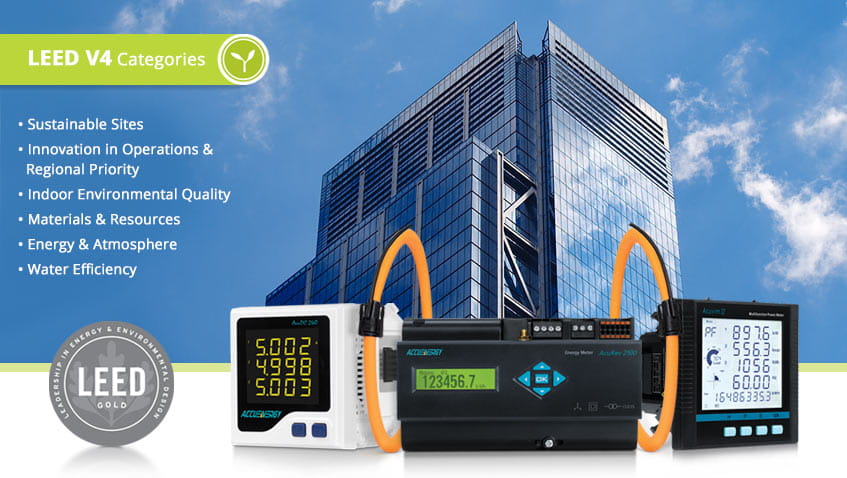LEED v4 Requirements for Advanced Energy Metering
Envisioned in 1998 by the U.S. Green Building Council (USGBC) to improve building performance, the LEED (Leadership in Energy and Environmental Design) program is a globally recognized, comprehensive green building rating system. The goal of LEED is to promote high efficiency in buildings and decrease operational costs while also increasing the health and comfort of building occupants.
As interest in environmental impact grows every year, LEED adoption has continued to gain momentum and it has been integrated into more than 100,000 buildings worldwide1. Although there can be upfront costs for constructing to LEED standards, these high-efficiency buildings typically consume 25% less energy and have saved an estimated $1.2 billion in energy costs from 2015-2018 alone2. With an attractive payback over a building’s lifetime and the positive PR associated with a LEED project, the program’s continuing popularity is no surprise.
As part of the LEED process, a building’s design can earn points across various categories such as Energy and Atmosphere, Water Efficiency, Innovation, and other environmentally related categories. While some categories contain required processes, other points are optional. A score is tallied for each LEED project which gives it a final certification level from “Certified” (40-49 points) all the way up to “Platinum” (80+ points).
Under the Energy and Atmosphere category, “Building-Level Energy Metering” is a requirement across all LEED projects. The intent of this process is to encourage ongoing energy management as well as to pinpoint energy reduction opportunities by tracking facility-wide energy consumption. To meet this requirement, building-level meters, or submeters, must be used to collect energy data for a five-year period at one-month intervals. Total energy consumption is not relegated to electricity only – all forms of energy, including natural gas, steam, fuel oil, chilled water, and other sources, must be permanently metered.
In LEED v4, an additional point may be obtained by installing Advanced Energy Metering and this may be one of the most cost-effective ways to add to a LEED score. The goal of Advanced Energy Metering is to track ongoing system and tenant-level consumption while also metering large, individual loads that make up 10% or more of annual consumption. These loads typically include HVAC systems, lighting, boilers/chillers, and other significant building processes.
In addition to which services and systems require metering, the meters deployed on a LEED project must also meet a list of requirements. When researching metering solutions, it is important to ensure instrumentation is up to the task of effectively measuring required services throughout the building. All meters and submeters need to be:
- Suited for permanent installation
- Capable of recording at intervals that are ≤1 hour
- Able to transmit data to a remote location
- Designed to record consumption and demand parameters
- Capable of recording power factor (if installed at the building level)
- Ready to connect to a communication network such as a local area network (LAN), building automation system (BAS), or wireless network.
- Equipped to store data for 18 months (minimum)
- Able to report hourly, daily, monthly, and annual energy usage
Installing Advanced Energy Metering will not only improve the overall LEED score, but is a productive strategy for controlling energy consumption, keeping overhead costs in check, and optimizing building performance to reduce climate impact.
1 https://www.usgbc.org/about/mission-vision
2 https://www.usgbc.org/leed/why-leed

